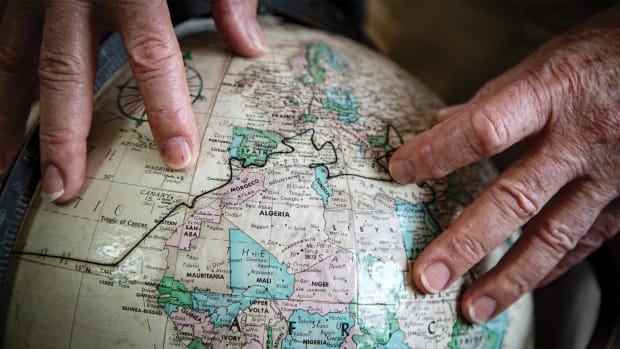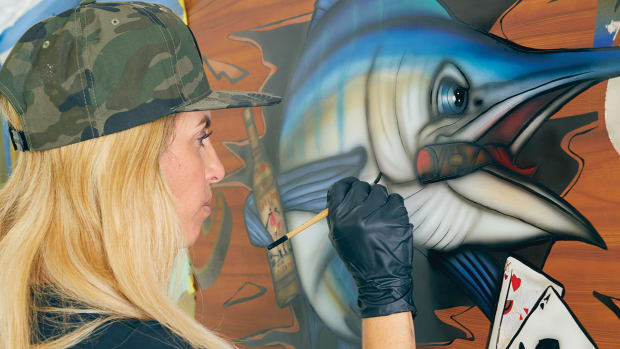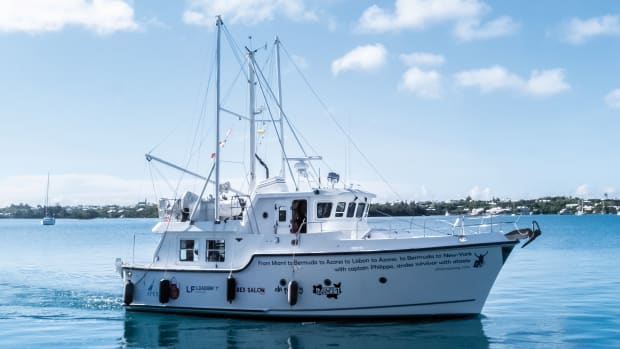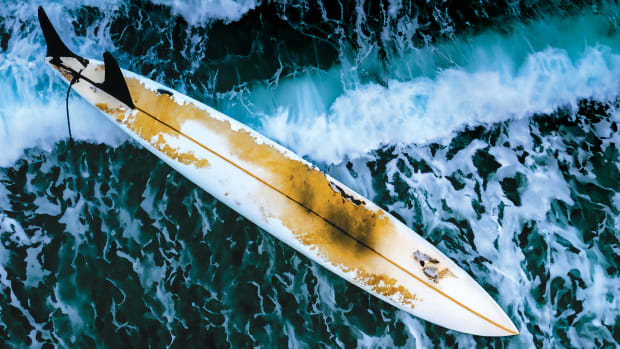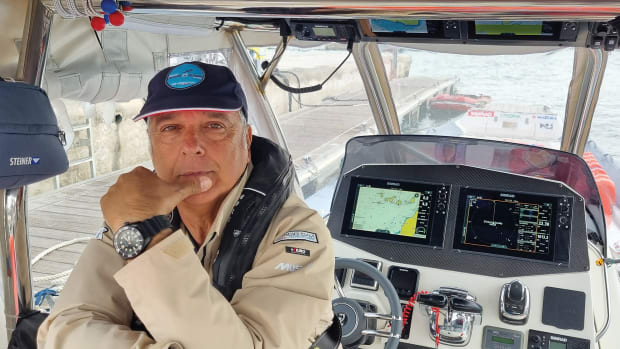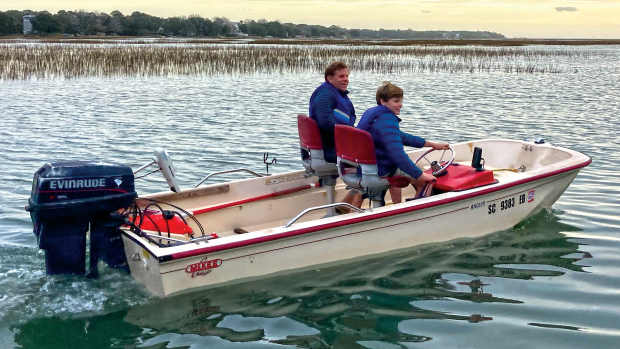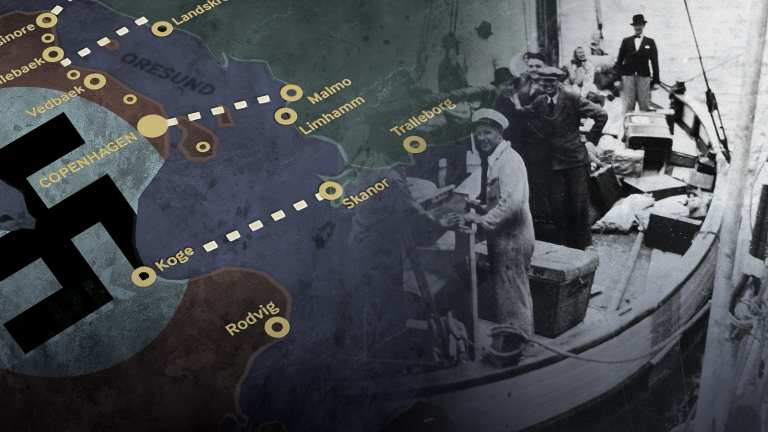
Secret Stowaways
When you look at the old, green, dilapidated Danish fishing boat, the first word that comes to mind might not be hope, but that’s exactly what Thor personifies. She was one of the last of the World War II-era boats left on the harbor in the port city of Gilleleje, Denmark. And while she has certainly pulled in her share of fish, the most significant haul she and her captain, Erik Olsen, would ever ferry, was a Jewish family they rescued by smuggling them out of Denmark’s waters and into Sweden during the Autumn of 1943.
It was the height of the Holocaust, then ten years underway, however, up until this point Denmark had remained uniquely self-governing—they hadn’t put up a fight when the Nazis came to take over and as such, were treated differently than most other nations Germany came to occupy. “Nazis saw Denmark as their model country,” Deputy Director of the Florida Holocaust Museum Erin Blankenship says. “A lot of Scandinavian people are blonde haired, blue eyed, tall, and they allowed the Danish government to still govern while they occupied the country.”
For Jewish citizens of Denmark, that meant there were no requirements to wear a star of David, there were no Jewish ghettos, and there was no segregation. Denmark was a land of equality, even amidst the Third Reich, Blankenship notes. But eventually, tensions rose, and along with it, Danish resistance, so the Germans planned for a full occupation.
In September of 1943, Nazi Germany decided that it would take control of Denmark and that the country’s Jewish residents would be captured on the day of Rosh Hashanah. But when their Denmark attaché Georg Ferdinand Duckwitz learned of the plan, he appealed to the Swedish government to provide Danish Jews safe harbor. Sweden refused to help without the approval of Nazi Germany, who ignored the request altogether, so Duckwitz took the situation into his own hands and tipped off Chairman of the Danish Social Democratic Party, Hans Hedtoft. Word got to the Danish resistance movement and the chief rabbi at the time, Marcus Melchoir, who spread word to every Hebrew who came to temple on the eve of Jewish New Year.
Denmark’s citizens quickly sprang into action, mostly through the improvised efforts of civilians who felt obligated to lend a hand to their neighbors—hiding them in their houses, forests and wherever else they could as they awaited their chance to be smuggled across the Baltic Sea. Since Sweden was a neutral nation and only a ten-hour boat ride away, the nation’s harbors were a natural choice for escape. Eric Olsen’s Thor was one of what was likely hundreds of boats that partook in the risky mission, which put the lives of all involved at stake, as the Gestapo patrolled the waters.
“Below deck is where they would hide, sometimes they were in live wells, sometimes there were just holds for different types of freight, so in a lot of cases the Jews were hiding there,” Blankenship explains. “And then they would put a layer of fish over them so it would mask the smell, because the Nazis did have dogs.” When boats arrived on the Swedish coast, the Jews would escape to land via dinghy or on some occasions Swedish Coast Guard or other boaters would assist them. This process would go on for two weeks.
Olsen, who had purchased Thor in 1943, would be testing her grit that same year, as he, like many Danish civilians, was approached by the Danish Resistance and asked to help smuggle Jews out of the country. Olsen secretly made the choice to help four Jews escape before the occupancy. Setting off from the waters in Koge, Olsen had the escapees hunch below deck and covered them and the remaining storage space with fish. They made it to Skanör, Sweden, and the family he ferried survived; he never told a living soul about it in the years to follow—not even his own wife, Blankenship notes. He simply carried on fishing.
But the man it seems Olsen likely saved, Max Fisch, went on to have his own family. Fisch didn’t talk much about surviving the Holocaust either—no one really did. But from what Fisch did share with his daughter, Margot Benstock, he never lost gratitude. As years have gone on, Benstock has often wondered if any of the boats that saved her people dozens of years ago, were still around. So, she started a journey with Blankenship and a fellow child of Danish Holocaust survivors named Irene Weiss, to find one.
“I’ve been involved with the Florida Holocaust Museum for many, many years and until that point all we had was a little model of a boat that was in the main exhibit, but it was important to have a fishing boat too,” Weiss, a former board chair of the museum, explains, adding that the most formidable item in their collection was an actual boxcar that was used to move Jews to the concentration camps. “It shows the worst of humanity—the worst things people can do—and the Danish fishing boat was symbolic of an entire country that got behind rescuing over 7,200 people.”
Though she had tried throughout the years, Benstock says she was never able to find one of the legendary Danish boats used to rescue the Jews, they’d either fallen apart or disappeared altogether. But when her help was requested by Weiss, she wanted to try again. “I called a good friend of mine in April, two years ago,” Weiss says. “She says to me, ‘You know what, I’m gonna go to that small city in the northern part of Denmark where most Jews left from, and I’ll try and find something after Passover.’” A few weeks later Benstock’s friend called her while standing next to the broker who owned Thor.
The 34-foot Danish workboat got her moniker, which is etched deeply into the console’s wooden hardtop, due to her duty as an eel fishing vessel, as she often carried an eel spike shaped like the mythical demigod’s hammer. At first, the women didn’t know the history of Olsen’s old fishing boat so they pressed the broker to call the man who sold it to him, Klaus Olsen. “When we asked the broker if he’d found anything out, he said Klaus wanted to speak with us,” Benstock explains.
Over the phone, Klaus explained how his father had saved a Jewish family and ferried them over to Sweden—it was a story his father had not shared with him until he was much older. “It was just not one of those things that people talked about, survivors didn’t talk an awful lot about their stories and the rescuers in Denmark—they just did things out of the goodness of the heart,” Benstock says.
The story that Klaus shared with Benstock lined up with the same things her own father had told her. While she can’t say for sure, it’s highly likely Benstock had unintentionally found the very same boat that saved her own father’s life. An overwhelming sense of emotion came with that, as well as a continued gratitude for the Danes. “They felt a responsibility to take care of their countrymen, and because of that, Margot’s parents and her grandparents escaped, my parents escaped and because of that we are alive,” Weiss says.
Thor had been in the water since Olsen bought her back in ’43. After being unable to buy the land needed to live as a farmer, he saw fishing as a lucrative alternative. For many years she was used as an eel fishing vessel for a long-established business Olsen’s son Klaus would later take over. By the time the museum was having the boat lifted out of the water, her hull was heavily fouled with barnacles that had to be scraped away. Beyond any physical tediousness, Benstock also had to write a letter to Denmark’s Heritage Agency, as the vessel was considered historic and subject to confiscation to serve in a Danish history museum. After receiving permission, Thor was hoisted via a custom cradle and secured to a cargo ship that brought her into Miami, where she was then trucked to the Florida Holocaust Museum’s warehouse.
While there, Thor will be restored. Lead that was used as ballast will be removed, along with rotted wood and old gasoline and oil still on board. By the fall, the staff plans to have Thor situated right next to the concentration camp railroad boxcar inside the St. Petersburg-based museum. Her hull will rest a few feet below ground level so that her deck will be eye level for viewers.
“You know when you see the boxcar, it just brings a feeling of fear; when you’re around Thor you feel like you want to touch it because he has a good feeling about him,” Benstock says. “And all the good that it represents that the Danish people did. I think for the museum, we want people to leave feeling hopeful and to feel empowered that they can do the right thing.”






